| Botanical Name |
|
| Family |
Hyacinthaceae - The hyacinth family. |
| Pronunciation |
le-de-BOR-ree-a re-vo-LOO-tuh |
| Common Name(s) |
English: Ledebouria; Common squill
IsiXhosa: umledina; Inqwebebane
|
| Plant Group |
- Bulb / Corm / Rhizome / Tuber / Epigeal bulb Bulbs: are made up of fleshy scales as in an onion
Corm: a short, swollen, underground stem that is hard and not fleshy as in a gladiolus
Tuber: a solid, fleshy, underground, storage organ as in a potato
Rhizome: an underground, horizontal, swollen stem at the base of the plant as in an iris
Epigeal bulb: bulbs that rest above the ground with only the roots anchoring the plant to the earth as in albuca
- Ground Cover A plant with a low-growing, spreading habit, grown specifically to cover the ground.
- Succulent A plant having fleshy stems or leaves often adapted to dry conditions.
|
| Plant Size |
- Small
| Tree | 4m to 8m |
| Shrub | 50cm to 75cm |
| Perennial/ground cover | 10cm to 20cm |
| Bulb | 20cm to 30cm |
| Succulent | 10cm to 20cm |
|
| Position |
- Canopy Shade Canopy shade is found below closely grown trees where some light filters through. Ideal for the protection of herbaceous plants.
- Light or Dappled Shade Found below trees with sparse, open foliage. Ideal for the protection of herbaceous plants.
- Partial Shade The area is in shade for part of the day and in full sun for part of the day.
- Sun The area is in full sun for all or most of the day, all year round.
|
| General Information |
- Deciduous to Semi-deciduous In warmer areas a deciduous plant may not lose its leaves during winter at all, or may lose its leaves for a very brief period, or may only lose part of its foliage.
- Drought Tolerance: High The plant is well adapted to arid conditions; it can survive long periods of drought and high temperatures without extra water.
- Frost: Half-hardy The plant is able to survive low temperatures and some frost but requires protection against severe frost.
- Water Wise Plant species originating from low rainfall regions that require less water to survive and thrive than other plant species.
|
| Specific Information |
Ledebouria belong to a succulent plant group with Epigeal bulbs - bulbs that rest above the ground with only the roots anchoring the plant to the earth. Ledebouria revoluta is widespread and one of the more common species in the genus. It has many different growth forms. It grows to 15 cm with triangular leaves forming a rosette. The leaves are variously spotted or blotched with red to purple. If grown in too much shade they remain almost green. They are evergreen in moister areas but more often deciduous, as the larger part of their range is in drier areas or where there is light frost.
|
| Ad Break |
|
| Flowers |
| Description |
tiny, bell-shaped, clustered along the ends of lax stems
|
| Season |
- Spring to Summer Plants will seldom bloom for the entire season as given in the list, but should flower during a period within these parameters.
|
| Colour |
|
| Growth Rate |
- Moderate Specifying growth rate can be very misleading as there is considerable variation of growth rate depending on type and species of plant, available water, supplementary feeding, mulching and general care, as well as the plants suitability and adaptability to the garden environment.
|
| Plant Uses |
- Attracts bees, butterflies or other insects This plant attracts insects which can be food for birds or other creatures in your garden.
- Container Trees, shrubs and ornamental species that can adapt to growing in a restricted environment.
- Edging A low growing plant that provides softness or definition to the edges of a bed or walkway.
- Filler Either a fast growing tree or shrub used temporarily to fill in an area while the permanent plants grow to a desired size, or a plant used to fill gaps in borders or beds.
- Foliage Plant Plants grown because their foliage is colorful or unique. Many of these plants have insignificant flowers.
- Ground Cover Low-lying plants that spread fast, require minimal maintenance, and cover large expanses or bare areas between bulbs or shrubs. They provide protection from erosion and drought and improve the visual appearance of the garden.
- Mass Planting Plants useful for filling a large area with just one or a few kinds of plants spaced close together. Creates a bold, dramatic effect and to reduces maintenance.
- Pot Plant A plant that needs a protected environment on a patio or indoors.
- Rock Garden An area constructed of larger rocks, arranged naturally, to emphasise the use of stones as a main element. Generally plants used do not need a lot of care.
- Suitable for smaller gardens Such plants do not have invasive root systems, remain small or controllable and can often be grown in containers.
- Wild Garden An indigenous garden planted for the benefit of wildlife and birds. Provides food, water, a variety of mini-biomes and no poisonous chemicals are used.
|
| Distribution and Habitat |
from Swellendam in the Western Cape to the Eastern Cape, Free State, KwaZulu-Natal, Limpopo, Mpumalanga, and North West, then further north to eastern and southern Africa and on to India, on stony slopes and in the shade of shrubs and trees
|
| Planting Suggestions |
Ledebouria revoluta prefers partial or light shade and a well-drained soil. The addition of compost will produce better results but is not a prerequisite. Plant the bulbs with just the base of the bulb below the soil. Water adequately in the summer growing season - too much shade or over-watering will lighten the purple blotches, and could also rot the bulbs. Ensure a dry resting period during the winter. This plant can be used as an indoor plant in a bright, sunny spot.
|
| Medicinal Uses |
Mention has been made that Ledebouria species have been used medicinally for pregnancy, diarrhoea, influenza, backache, skin irritations, wounds and lumbago. In Africa the genus is alleged to be poisonous.
|
| Ad Break |
|


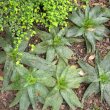
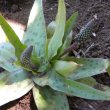
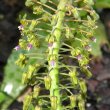
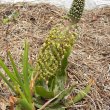
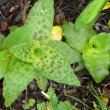
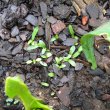
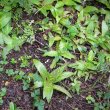


Comments
Ledebouria revoluta
So interesting. I have started collecting succulents and small bulbs. Is LR available for sale?
Ledebouria revoluta
Hi Angy
I have also found myself becoming fascinated with the smaller succulents, and particularly ledebouria.
I do have this species for sale. Please click on the Purchase Online box for further details and prices.
Kind regards
Lorraine
Discuss this plant
Share knowledge, ask a question or give an experience.